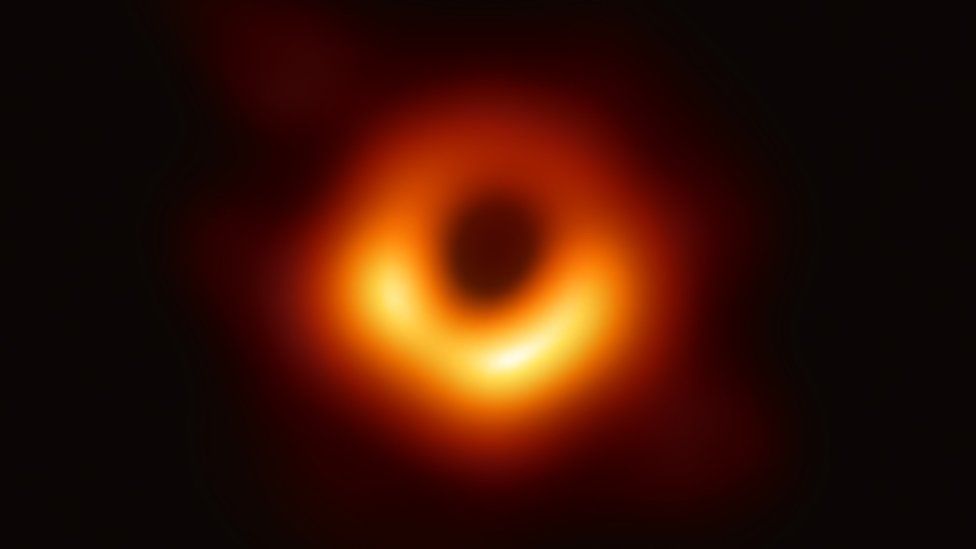Black Hole And Its First Image
Jun 10, 2019 • 92 views
A black hole is a region in space which releases radioactive waves from its centres which do not escape anything from it, not even subatomic particles or even electromagnetic radiation like light. The circular ring around the black hole which does not allow anything to escape from it is known as ‘Event Horizon'. According to Albert Einstein's equation, at the centre of a black hole, a star's entire mass has collapsed into an infinitely dense and dimensionless point, which is known as ‘the singularity'. A black hole is situated in M87 or Messier 87 galaxy. It is situated 55 million light years ago and its mass is 6.5 billion times greater than the mass of the sun. That is why the black hole is considered as a supermassive object.
Albert Einstein has already given its existence in his theory of ‘General Relativity', but it was first used by Karl Schwarzschild in 1916. He was the German astronomer. He said that ‘matter compressed to a point of singularity would be enclosed by a spherical region of space from which nothing can escape, i.e. the Event Horizon’. Although its interpretation as a region of space from which nothing can escape was first published by David Finkelstein in 1958. Even Stephen Hawking has also researched a lot about it.
The very first image of a black hole was published in six papers in the Astrophysical Journal Letters which describes the observation tour de force, the process of achieving it, and the details that the image reveals. The first image was seen on 10th April 2019. It was only possible with the collaboration of more than 200 scientists from Hawaii to South pole who have started their work 2 years before i.e. from 1st April, 2017. This image was seen with the help of an ‘Event Horizon Telescope’ project. In this project, eight telescopes were established at eight different regions of the world which helped scientists to get the real image of a black hole. In this project, eight radio telescope teams use Quantum clock to observe it minutely. Moreover, a virtual clock is made with a combination of all the eight telescopes which updates data collected from the real telescopes. Scientists have measured all the wavelengths coming from the black hole to give the final or real image of a black hole.

Now, the question is why the image of a black hole is blurred? The answer to this question is that the black hole is very far from us and it is a very small image of a black hole which the scientists have zoomed it to make it visible to us. It is the picture of a gravitational atmosphere and not the real image of a black hole as no light can escape from it, so we cannot take the real picture of it. Moreover, the LIGO (Laser Interferometer Gravitational wave Observatory) collaboration announced the first direct detection of gravitational waves, which also represented the first observation of a black hole merger.
During the press conference, the director of the National Science Foundation, France A. Cordova was announcing the team’s achievement, held at the National Press Club in Washington, D.C. Furthermore, she said that “We have been studying black holes for so long that sometimes it is easy to forget that none of us has ever seen one”.
Shep Doeleman, project director of the Harvard-Smithsonian Institute for Astrophysics has said that “What you are seeing is evidence of an event horizon… we now have visual evidence of a black hole”.
Again, Caltech's Katie Bouman, a member of the Event Horizon Telescope imaging team has said that “What we are trying to image is really, really small on the sky”.
